If you love broccoli, you will likely fall in love with its hybrid variety, the broccolini. It is an uncommon type of cruciferous vegetable in the same family as broccoli that you can freely grow in your yard.
Who knows, learning how to grow broccolini will make you might even cultivate it and sell it in your local farmer’s market!
Let us get you started by knowing more about this hybrid vegetable.
What is Broccolini?
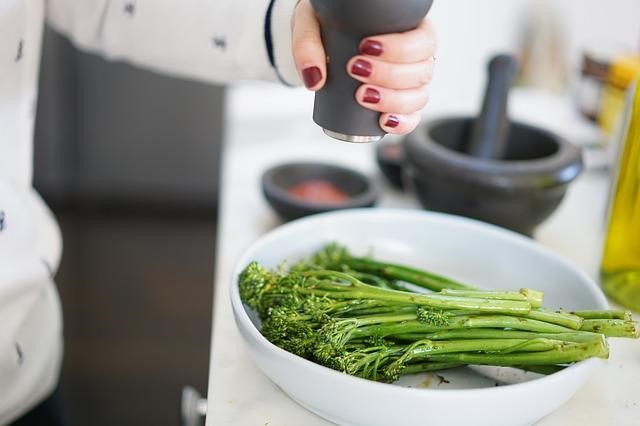
Broccolini is a hybrid version of European broccoli and Chinese broccoli. It has the same texture as broccoli but doesn’t have a large head. The flower shoots or florets resemble small broccolis, bearing the same color and texture.
Thus, it has other names in other regions such as:
- Aspabroc
- Baby broccoli
- Asparation
- Bimi
- Broccoletti
- Broccolette
- Sprouting broccoli
- Tenderstem
Broccolini was first developed in Yokohama, Japan, through Sakata Seed Company. In 1994, they partnered with the Mexican company Sanbon to introduce broccolini in the international market using its former name as Aspabroc.
In 1998, Sakata Seed Company and Mann Packing Company led aspabroc to the US market and gave its commercial name today as broccolini.
Broccolini grows up to 31 inches and is edible from its florets to its stems. It has a sweeter but peppery taste that makes it a suitable addition to vegetable salads and stir-fry dishes.
It is also rich in vitamins and minerals such as:
- Vitamin C
- Vitamin A
- Vitamin E
- Calcium
- Folate
- Iron
- Potassium
Though Mann Packing Company commercially produces broccolini, broccolini seeds are now available online or at your local gardening shops to grow your broccolini at home.
There are several broccolini varieties in the market, such as:
How To Grow Broccolini At Home
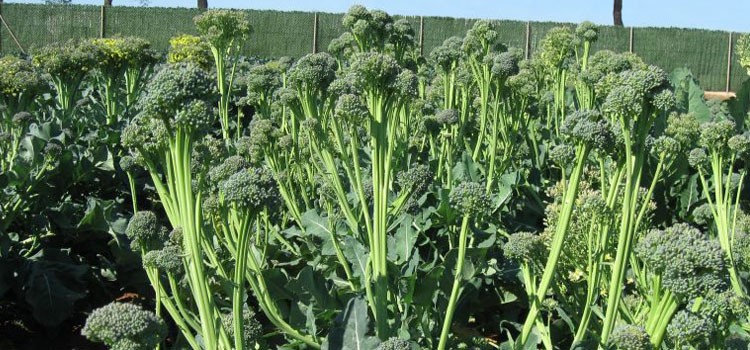
Broccolini grows and thrives in cool climates. It cannot tolerate extreme heat and freezing temperatures that exceed 80 F. It grows in USDA zone 2 to zone 10. However, it’s more tolerant to warm temperatures than broccoli.
Here are the growing requirements of broccolini:
- Soil requirements: Nutrient-dense and well-draining soil with a PH level of 6.0 and 7.0.
- Temperature requirements: Temperatures not exceeding 80F and grows in full sun.
- Water requirements: 1 to 2 inches of water per week and water as needed when the soil dries out fast.
- Fertilization: A general fertilizer lie 10-10-10 or 12-12-12 NPK ratio will be enough to jumpstart the nitrogen feeding for your broccolini seedlings.
- Pest control: Broccolini is also prone to have the same infestation as broccoli. It’s best to start preventive pesticides like organic neem oil solution early on. Neem oil can be used up to the day of harvest since it is safe and doesn’t cause harm to humans and animals.
Common pests and fungal diseases in broccolini include:
- Aphids
- Slugs
- Cabbage loopers
- Root maggots
- Flea beetles
- Powdery mildew
- Blackleg
Planting Broccolini
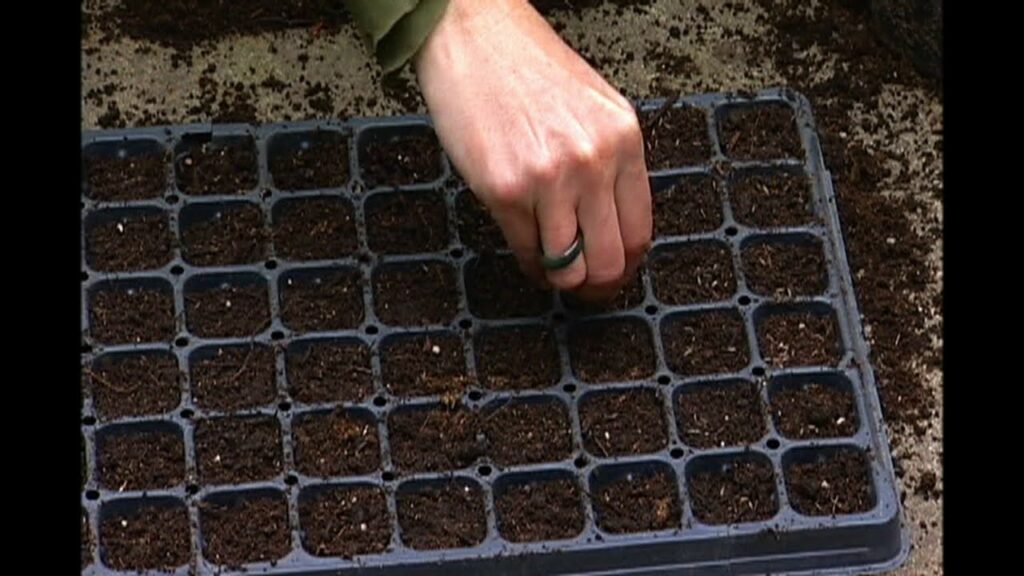
Though most gardeners easily grow broccolini from cuttings, you can also grow them from seeds. Once you successfully grow one broccolini, it will be easier to propagate them through their cuttings.
Here’s how to start sowing your broccolini seeds:
Materials:
- Seedling tray
- Potting soil
- Shovel
- Compost
- Aged manure
Directions:
- Mix the compost and aged manure with your potting soil.
- Fill the seedling tray with the mixed potting soil.
- Use a popsicle stick to create shallow holes in the soil.
- Drop the seeds at about ¼ of an inch to the surface to allow the air and sunlight to get to the seeds.
- Cover the seeds with soil and water them.
- Place the seedling tray in an area where they can get partial or full sun.
- Let it germinate for about 7 to 10 days.
Transplanting Broccolini
Check the seedling tray from time to time by tugging the seedlings a little bit. If there’s a subtle resistance, then the seedling is developing a good root system.
After 4 to 6 weeks or when they have developed 6 to 8 leaves, transfer them in their pots. From there, you can start adjusting them to outdoor temperatures by bringing them outside for a few hours within a week.
Caring For Your Broccolini Seedlings
Once your broccolini has adjusted to the outdoor temperature and produces new leaves, you can start applying preventive pest control using neem oil.
Ideally, you apply your neem oil solution at night or early in the morning. Applying pesticides or fungicides at noon can burn the leaves of your plants.
Make sure to water your broccolini with two inches of water every week. If you notice that the soil is dry, water them again to prevent plant stress due to drought. It takes about two to three months before you can harvest your fresh broccolini.
The best time to harvest your broccolini is before the leaves turn yellow to preserve its sweet and peppery flavor. At maximum, you can get about five sets of broccolini florets in a single growing season.
Health Benefits of Broccolini
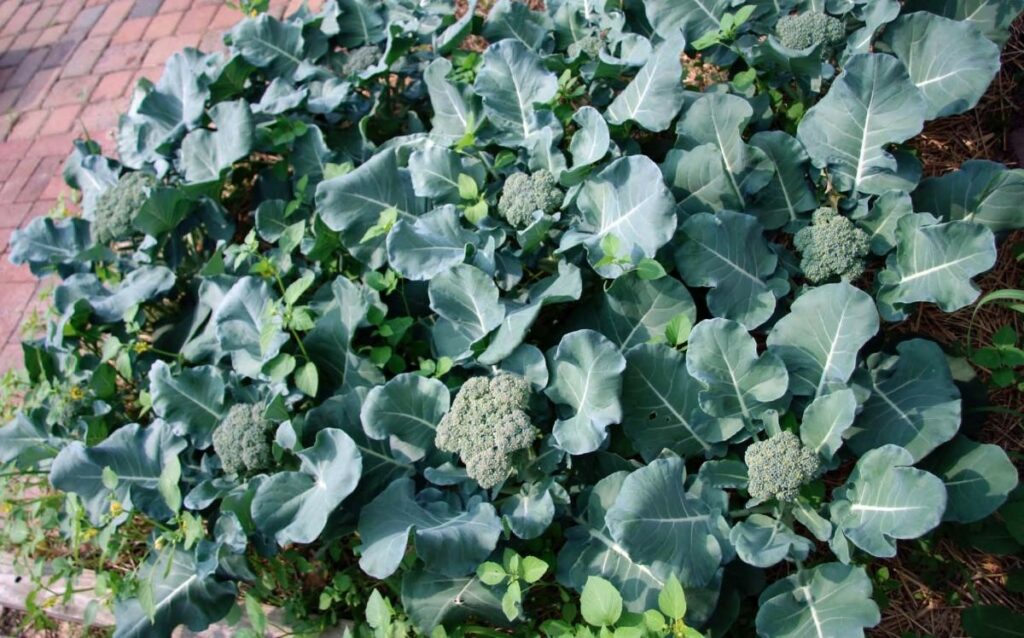
As part of the cruciferous vegetables, broccolini hosts several nutrients that are good for your health.
The benefits of broccolini to your health include:
- Good for your eye and skin health: Broccolini is rich in vitamin A aids in sending light signals from your eyes to your brain. It helps prevent blindness and the decline of your eyesight as you age. A good dose of Vitamin A from broccolini also prevents and treats acne.
- Boosts your immune system: Vitamin A and vitamin in broccolini are also essential in the production and function of white blood cells.
- Good for your heart: Calcium and magnesium helps lower your blood pressure that helps keep your health healthy. Calcium also strengthens your bones and your teeth and keeps damages and age-related degeneration at bay.
- Promotes good digestion: Adding a broccolini to your diet adds enough fiber that will improve your digestion. Therefore, you can get fewer chances of getting bloated or suffer from constipation.
- Helps you lose weight: Brocollini is filling and can be a good substitute for dense carbohydrates like rice. A cup of broccolini contains about half of the calories found in a cup of rice or equivalent to 37 calories.
Best Recipes For Broccolini
Now that you know the amazing benefits of broccolini, it’s about time to give you some tips on how you can add it to your diet. You can either steam, fry, or boil them which makes it a pretty versatile vegetable.
Here are some great recipes to try:
#1 Garlic Broccolini (side dish)
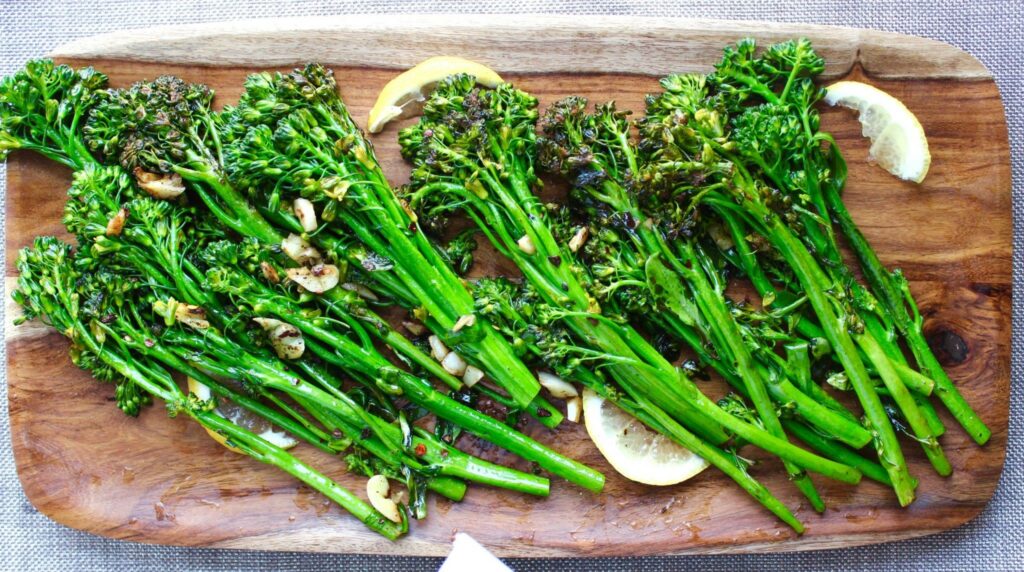
Ingredients:
- 1 lb. of Broccolini
- 4 cloves of crushed garlic
- 1 pinch of Himalayan salt
- 1/2 cup water
- 2 to 3 Lemon wedges
- 1 tbsp. Olive oil
- 2 tbsp. Of soy sauce.
- 1 tsp. Crushed ginger
Directions:
- Wash the broccolini and cut the end of the stems.
- In a hot pan, add olive oil and saute the broccolini.
- Add the crushed garlic, soy sauce, ginger, and salt. You may also add pepper to add more flavor.
- Let it fry for about 5 minutes then add the water.
- Let the broccolini cook for a few minutes until it turns bright green. Serve as a side dish or a healthy snack.
- Squeeze the lemon upon serving.
#2 Broccolini pasta
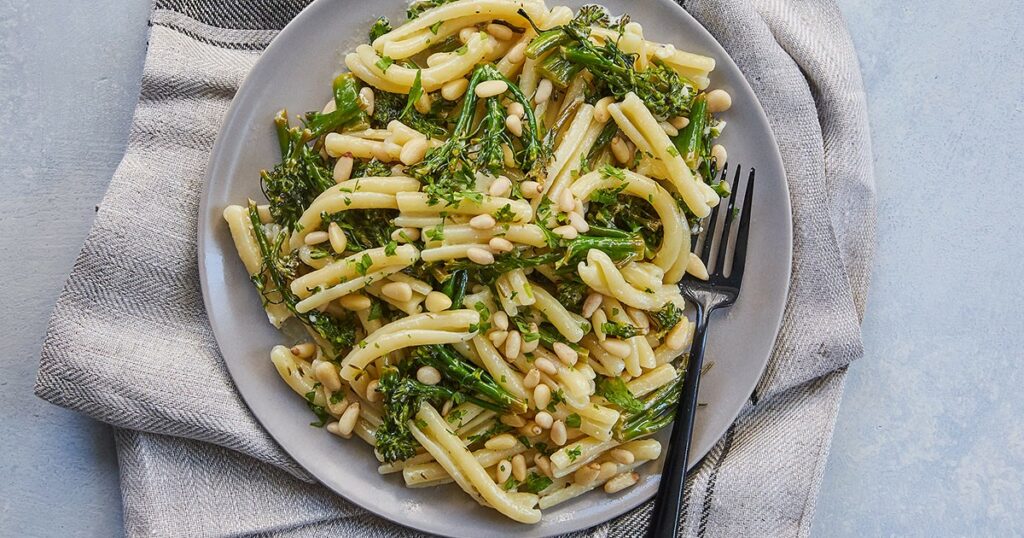
Ingredients:
- ½ kilo of any pasta of your choice
- Olive oil
- 1 bunch of broccolini chopped
- 1 tbsp. unsalted butter
- 1 pound broccolini, roughly chopped
- 2 cloves of crushed garlic
- ½ cup of lemon juice
- ½ cup heavy cream
- ⅓ cup grated Parmesan cheese
- Himalayan salt and freshly ground black pepper
- ½ cup pine nuts (optional)
- 4 tbsp. chopped fresh basil
Directions:
- Cook the pasta in a pot of boiling water and add salt.
- In a separate pan, add the olive oil and butter and mix them.
- Saute the garlic and broccolini and add the lemon juice.
- Once the broccolini is tender and bright green, add the heavy cream and parmesan cheese. Then, mix well.
- Add a pinch of salt and pepper to taste.
- Turn off the heat for the pasta and add it to the sauce. You may also add some of the pasta water to thicken the sauce.
- Lastly, crush the pine nuts and add them on top of the pasta along with freshly chopped basil leaves.
#3 Steamed broccolini with lemon yogurt sauce
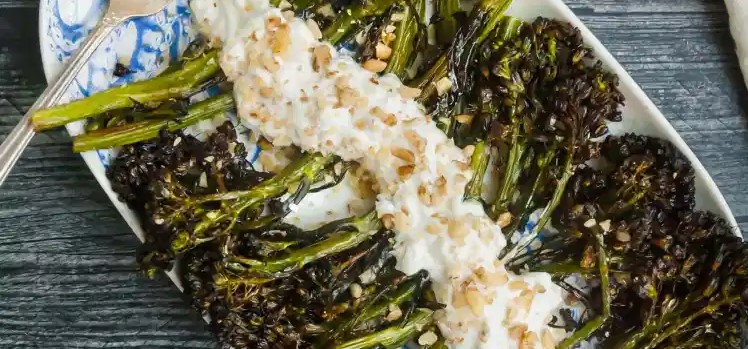
Ingredients:
- Olive oil
- A pinch of salt and pepper
- A pinch of cumin
- 1 bunch of broccolini
- 1 tsp. Red pepper flakes
- 2 tbsp. Of parmesan cheese
- ½ cup lemon juice
- 1 cup yogurt
- ¼ cup of crushed and roasted walnuts
Directions:
- Place the broccolini in a baking pan, add a dash of olive oil and sprinkle a pinch of salt and pepper. Let it cook in the oven for about 15 to 20 minutes at 425 degrees.
- Once done, mix it with other dry ingredients such as cumin, red pepper flakes, and parmesan cheese. Mix it evenly and place it on a plate.
- As for the sauce, mix the yogurt and lemon juice. Add a bit of salt and pepper to taste.
- Pour the sauce on top of the broccolini and garnish it with the roasted walnuts.
#4 Broccolini salad
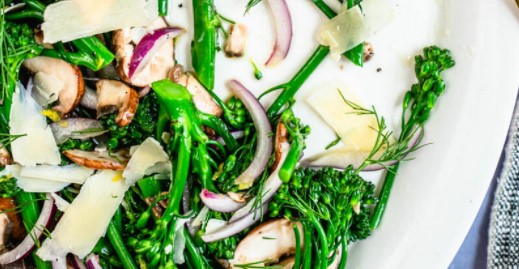
Ingredients:
- 3 bunches broccolini, chopped
- 1/4 small red onion, thinly sliced
- 4 oz. baby Bella mushrooms
- 1 tbsp white wine vinegar
- 1 tsp Dijon mustard
- 1 tsp sugar
- 1 pinch of salt
- 3 tbsps olive oil
- 4 sprigs of fresh dill
- ¼ cup Parmesan cheese
Directions:
- Add water and a pinch of salt to a pot and let it boil on medium heat.
- Add the broccolini and let it cook for 3 to 5 minutes.
- Drain the broccolini and let it dry.
- Slice the red onion and mushroom. Keep it as thin as possible to spread the flavor evenly in the salad.
- In a big bowl, mix all the dry ingredients such as the boiled broccolini, onion, dill, and mushroom.
- In a separate medium-sized bowl, mix all the wet ingredients such as olive oil, white vinegar, and mustard. Also, add cheese, salt, and sugar for the flavor.
- Add the vinaigrette mixture to the salad bowl and mix it well.
Frequently Asked Questions (FAQs)
What's the difference between broccoli and Broccolini?
The main difference between broccolini and broccoli is their overall shape, size, and taste. Other than that, they are almost the same. Broccolini tastes a bit sweeter and peppery than broccoli. It is also a bit more tolerant to warm temperatures than broccoli.
Is broccolini healthier than broccoli?
Broccolini and broccoli are both healthy in their respective nutritional value. Broccoli is rich in Vitamin B12 and folate while the broccolini is rich in Vitamin A and C.
Is broccolini bitter?
No. broccolini is sweeter than broccoli with a peppery taste. It is commonly mistaken as broccoli rabe which is a variety with a bitter taste.
Is broccolini more expensive than broccoli?
Yes. The probable reason behind its price is probably because a bunch of broccolini can give you about 20 stalks whereas, broccoli only has one head. You can also eat all the parts of the broccolini from its florets to its stems.
Is broccolini natural?
Broccolini is man-made since it is a product of merging two species of broccolis namely Chinese broccoli and European broccoli.
Can you eat the stems of baby broccoli?
Yes. You can cook them along with the florets or use them as a crunchy garnish for your other meals. Every part of the broccolini is edible, which makes it worth its price.
Can you eat broccolini raw?
You can eat raw broccoli as long as you chop them into bite-size pieces. They are a good addition to your salads or even dips in replacement for basil.
Is broccolini really baby broccoli?
Many people are confused by the term baby broccoli. Baby broccoli is a term used by some about broccolini. Broccolini is not necessarily the younger version of broccoli but it is another variety derived from two types of broccolis: Chinese and European broccoli.
Final Thoughts
Growing broccolini can be hard at first since not a lot of gardeners are growing them. However, many gardeners are now starting to take notice of the nutritional benefits of broccolini. We hope that you’ll be one of the first producers of broccolini in your region.
If you find this post helpful, please don’t forget to share it with your friends and introduce them to this new variety of broccoli. Let us know in the comments your experience in growing broccolini.
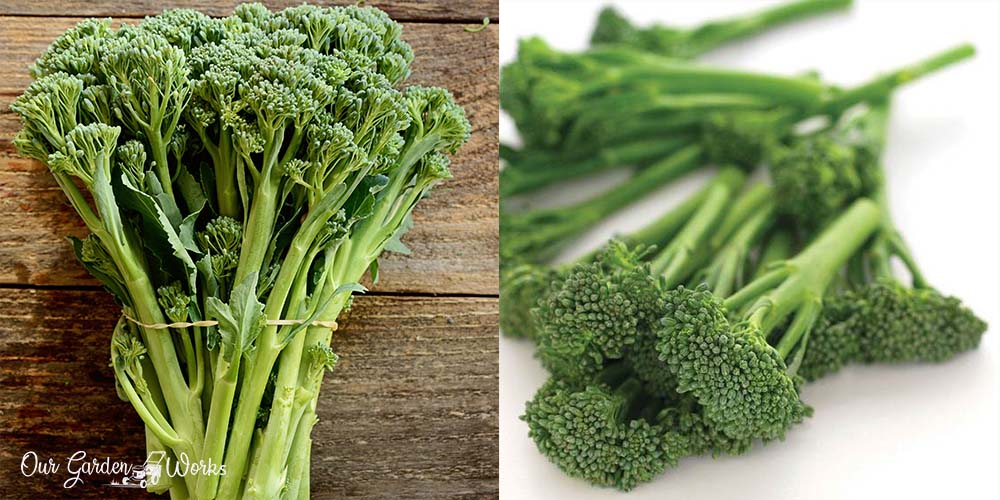
Are brocollini ok to eat after they bolt
Hi Joe, you can eat them, but it’s not going to bring you the same healthy serving of nutrition that traditional broccolini would have.